
16 minute read
Planning for Profitability in Labels and Packaging 2021
Planning for Profitability in Labels and Packaging 2021 Packaging 2021
The Top 10 Trends that Will Influence and Shape the Year Ahead
Advertisement
As the new year begins, label and packaging printers/converters are developing strategic plans to guide business and operational decisions in the year ahead. Setting a profitable course in the year ahead starts with identifying the key trends and forces that are shaping the competitive landscape and offering opportunities, so as to be best positioned to respond to them.
This special report leverages ongoing industry surveys and market monitoring to identify the top trends and considerations for harnessing profitable label and packaging opportunities in 2021.
TOP 10 TRENDS FOR 2021
#1. COVID-19 Déjà Vu?
The most influencing force for what lies ahead in 2021 is the COVID-19 pandemic. Much of what happens this year will depend on when limitations on in-person events are lifted, when more businesses can operate at full capacity, and when schools can reopen fully. But there are many reasons for optimism, including the following:
• The approval and rollout of vaccines • The availability of rapid in-home testing kits • The development of therapeutics necessary to control the virus • The expected growth of the U.S. economy, which economists surveyed by The Wall Street Journal anticipate will this year exceed the fastest growth rate in two decades
Prospects look good at the start of the year, but economic recovery will not reach full strength until people are comfortable traveling, staying in hotels, being in large crowds, and participating in all types of activities they enjoyed prior to the pandemic. While no one knows when that will be, the start of the vaccine rollout is a positive sign. The good news for labels and packaging is that this segment of the printing industry proved to be more resilient in 2020 than others that experienced steep sales declines.
Among the reasons that label and packaging printing were able to successfully weather economic shutdowns is that these print applications support many essential products, including food, beverages, pharmaceuticals, spirits, consumer product goods, and personal protection equipment.
The pandemic has increased and continues to increase demand for certain products that offer opportunities for labels and packaging providers, including: • Spirits/alcohol • Household cleaning and disinfectant products • Bread machines • Yeast • Hair dye • Computer accessories • Fitness equipment • Board games • Jigsaw puzzles • Subscription boxes for pre-made meals • Face masks • Pandemic test kits and vaccine kits • Personal protective equipment (PPE)
#2. The Packaging Evolution From Functional Container to a Brand Ambassador Continues
Continuing innovations in printing technology will enable packaging to expand its functional role from that of a container that transports products or a label that identifies “what’s inside” to that of a marketing vehicle. Packaging is often the fifth “P” in the marketing mix for brand owners looking for
Planning for Profitability in Labels and
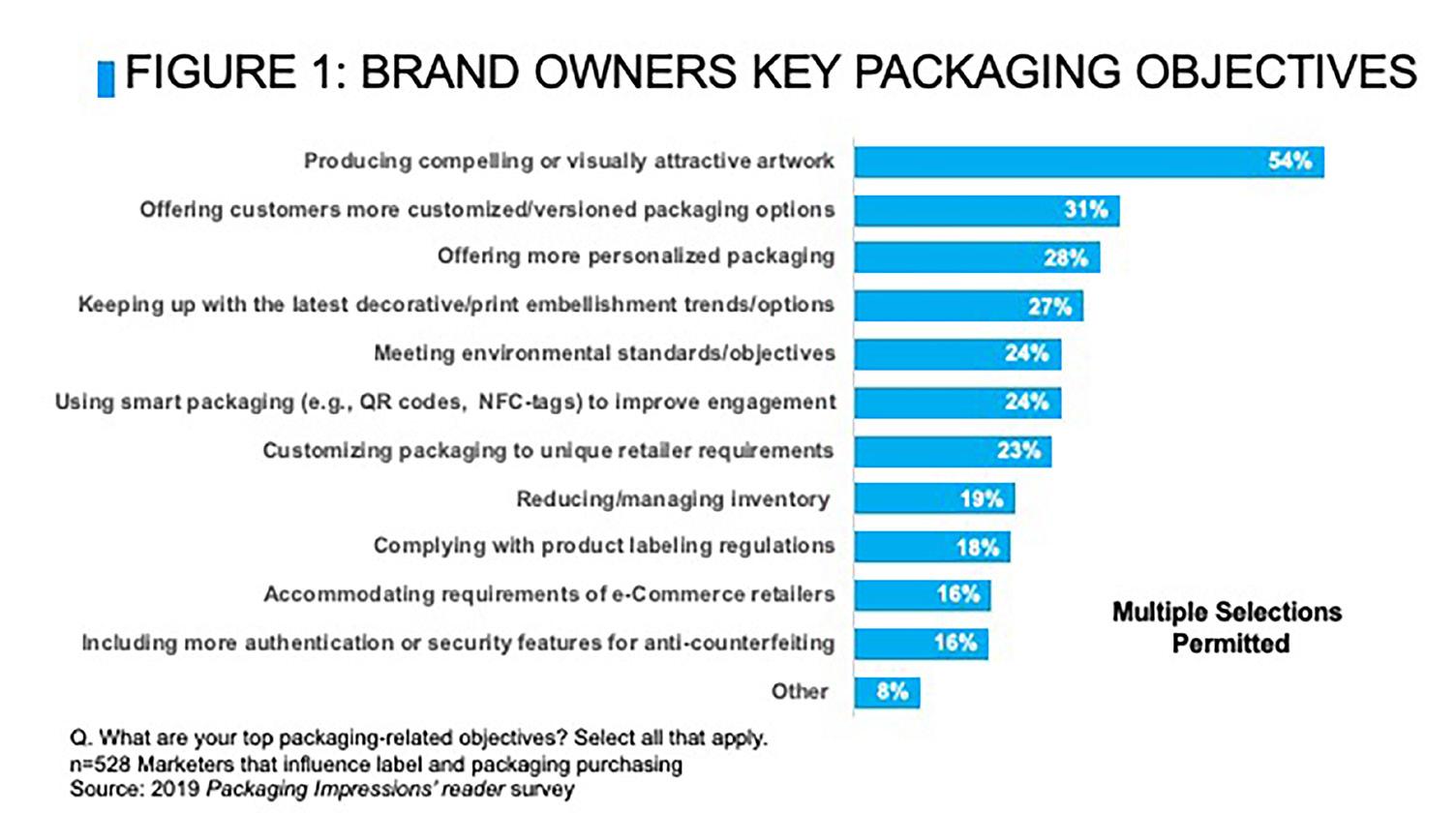
Brand owners recognize the marketing and promotional potential offered by packaging and are looking for innovative and engaging packaging solutions for consumer and industrial applications. According to a recent NAPCO Research survey of brand owners, producing compelling or visually attractive packaging was a top priority for a majority of respondents (Figure 1).
Other important objectives centered on finding ways to enhance packaging’s ability to engage customers (i.e., more versions, personalization,
ways to make products stand out from competitors, while connoting the quality of the product inside.
A product’s packaging makes a strong first impression on consumers, and 79% of brand owners participating in a NAPCO Research survey said that packaging is a key marketing tool for their products. Companies recognize that their products’ labels and packaging are a powerful extension of their organization and are often a customer’s first experience with a brand.

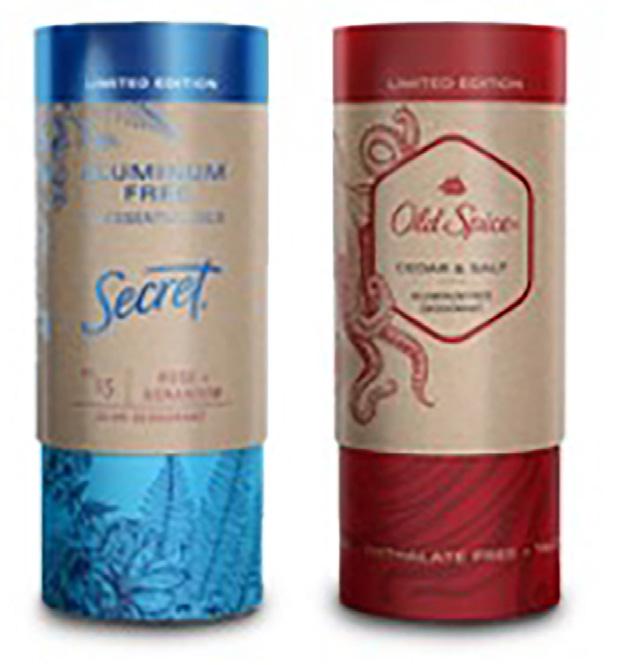
Figure 3: Procter & Gamble Deodorants Feature Sustainable Design
embellishment, smart packaging), improve supply chain management through better inventory management, and meet regulatory requirements.
#3. Sustainability Is Top of Mind for Brand Owners
The impact of labels and packaging on the environment will continue to be an essential priority for brand owners, retailers, and packaging printers and converters. Consumer demands for sustainable packaging influence designs, substrates, printing processes, and provider selections.
In today’s marketplace, consumers want transparency. Customers want to know how a company is producing its packaging. Will the material make a negative impact on the environment? Was the material sourced ethically? Was the process used to print the packaging sustainable?
According to NAPCO Research’s study Adding Value to Digital Printing, sustainable packaging is a top priority for brand owners and a key factor when selecting printers and convertors (Figure 2). Product packaging is a highly visible way to demonstrate commitment to sustainability. From using recycled and recyclable materials to using printing processes that eliminate chemicals and reduce waste, brand owners are turning to package printers and converters for guidance in overcoming challenges in developing more sustainable packaging.
The importance of sustainability can be seen in the actions taken across the many industries that use packaging. For example, Procter & Gamble recently released limited-edition tubes made from paperboard for two of its largest deodorant brands, Secret and Old Spice (Figure 3). By 2030, P&G brands have committed to using 100% recyclable or reusable packaging while reducing the use of virgin petroleum-content plastic by 50%.
In another example, providers of bottled water are considering aluminum, paperboard, and flexible formats as alternatives to the traditional plastic bottle. Digital printing is often considered more sustainable than other printing processes since it eliminates the use of printing plates and press chemistry. Digital printing also reduces makeready waste, as presses can print salable products almost immediately.
In addition, the ability to print short runs can eliminate waste created from product obsolescence. A recent NAPCO Research survey found that combating waste created by rapid product obsolescence was a top challenge for 30% of brand owner respondents.
In addition, hybrid printing processes that combine digital printing with flexography offer production and sustainability advantages.
#4. E-commerce’s Meteoric Rise Will Boost Label and Packaging Opportunities
The pandemic increased the volume of online product purchasing, as people looked to avoid contact with others or found that products were sold out in local stores. Growth in e-commerce sales will likely continue in the year ahead, as consumers have become accustomed to online ordering and the supply chain has adapted to meeting increased volumes.
Consider the following sampling of 2020 statistics on e-commerce: • U.S. consumers spent $211.5 billion online during Q2, up 31.8% from the previous quarter, ac- cording to the U.S. Census Bureau. • Nestlé reports e-commerce sales grew 49% in the first six months of the year to reach 12.4% of sales (compared to 8.5% of sales in 2019). • E-commerce growth for the week ended August 1 rose 71% Y/Y, per aggregated Bank of America credit and debit card data.
The increase in e-commerce retail sales is creating demand for all types of packaging, from labels to folding cartons to corrugated packaging. Secondary packaging like corrugated material is assuming a heightened role beyond protecting products against breakage, maintaining freshness during delivery, and keeping a consistent look-and-feel across multiple selling channels. The corrugated shipping box has become a key part of the e-commerce brand experience. Brands selling products online now require secondary packaging to carry their images beyond the retail outlet and into the consumer’s home, increasing brand owner demand for unique and high-quality designs on their corrugated shipping boxes.
Digital printing of corrugated material supports e-commerce marketers in their quest to deliver products in packaging that stands out and creates memorable customer experiences. Inkjet printing technology can now meet quality and

production speed requirements for printing the entire box — not just marking and coding. For example, inkjet technology, like Memjet’s DuraLink® platform, can print at speeds of around 15 boxes per minute, in high-resolution full color. More importantly, every box can be different, eliminating the need to warehouse preprinted boxes, as well as the time and labor of positioning and selecting from multiple-size boxes. Memjet’s water-based pigment inks provide a safe working environment, free of solvent or reactive chemistries. Upon recycling, Memjet’s inks are free of toxic ingredients or mineral oil chemicals.
#5. Digital Storefronts for Labels and Packaging: Not If, but When
The buying habits of label and packaging customers are changing as a new generation of customers is emerging who want to order and submit jobs via online portals. Packaging and label producers who don’t actively sell through digital storefronts had better get used to the idea of ceding serious market share to those who do.
Digital storefronts offer label and packaging buyers access to the shortrun, quick-turnaround production services they are increasingly demanding. In addition, online ordering appeals
to customers who are often shut out of the market by high minimum-orderquantity (MOQ) requirements and other norms of long-run production. These customers include emerging brands, start-up businesses, creative agencies, and others who need labels and packaging just like everyone else, only not in mass-market quantities.
Packaging and label printers who don’t actively sell through digital storefronts should investigate options for doing so, and determine whether to add them.
#6. Digital Printing: The Time Is Now!
Nearly three decades after the introduction of digital printing devices for commercial production environments, the move to more widespread use of digital presses in packaging printing has begun. The removal of barriers that halted more mainstream adoption in label and packaging printing applications will expand use.
Brand owner requirements, changing regulatory labeling requirements, substrate limitations, quality, production workflow, finishing, color matching, and technology investment costs were all among the factors inhibiting widespread growth of digital printing in packaging. Ongoing progress in technology innovation, early adopter successes, process simplification, brand owner creativity, and competitive drive are all forces removing former adoption obstacles, positioning digital printing of packaging for mainstream use.
Brand owners participating in NAPCO Research studies frequently report that shelf competition, lifestyle shifts, changing regulations, and product safety are key packaging influencers that play directly to digital printing’s strengths. Digital printing’s ability to produce versioned packaging and labels more effectively than conventional printing lets brand owners offer more compelling versions that stand out on crowded retail shelves. Variable-data printing of expiration dates, barcodes, and batch numbers also enables manufacturers and distributors to track products and offer buyers essential product information.
Digital printing offers label and packaging producers and their customers many attractive benefits. According to the NAPCO Research study Lowering Entry Barriers in Digital Printing for Packaging, sponsored by Memjet, the top benefits reported by survey respondents that print labels and packaging on digital devices include the ability to accommodate customers’ short-run production needs (57%), faster turnaround (49%), personalization (48%), the ability to cost-effectively print prototypes or short-run samples (45%), the ability to print multiple versions in a single print run (43%), and the ability to print only what is needed (43%), thus reducing inventory (Figure 4).

Digital printing offers label and packaging producers the advantages of agility, efficiency, and opportunity. According to a recent NAPCO Research survey, 80% of brand owners said that they prefer to work with printers and converters that offer digital printing.
Another proof point on the acceptance of digital printing in labels and packaging is from a survey of printers and converters serving the food-andbeverage market — one of the largest users of labels and packaging. Labels and packaging for food and beverage products can be as important as the product itself. Packaging printers and converters serving that market report in a NAPCO Research survey that their customers accept digitally printed labels and packaging (Figure 5).
Survey participants serving the foodand-beverage market were asked to rank the level of challenge in relation to customers resisting digital printing. Close to three-fourths of respondents (74%) reported no or only a slight challenge, indicating that their foodand-beverage customers accept digital printing.


Overall, market demand for digital printing in the food-and-beverage market is growing as brand owners seek to meet customer demands for more variety, expanded product information, and reimagined containers aligned with changing lifestyles.
#7. Inkjet Will Expand Digital Printing Adoption
Many forces at play are allowing more companies to leverage the benefits of inkjet in printing labels, corrugated materials, folding cartons, and flexible packaging. The ability to print directly onto various substrates, including corrugated material, folding cartons, and flexible films, makes inkjet an attractive and less complex process compared to alternatives.
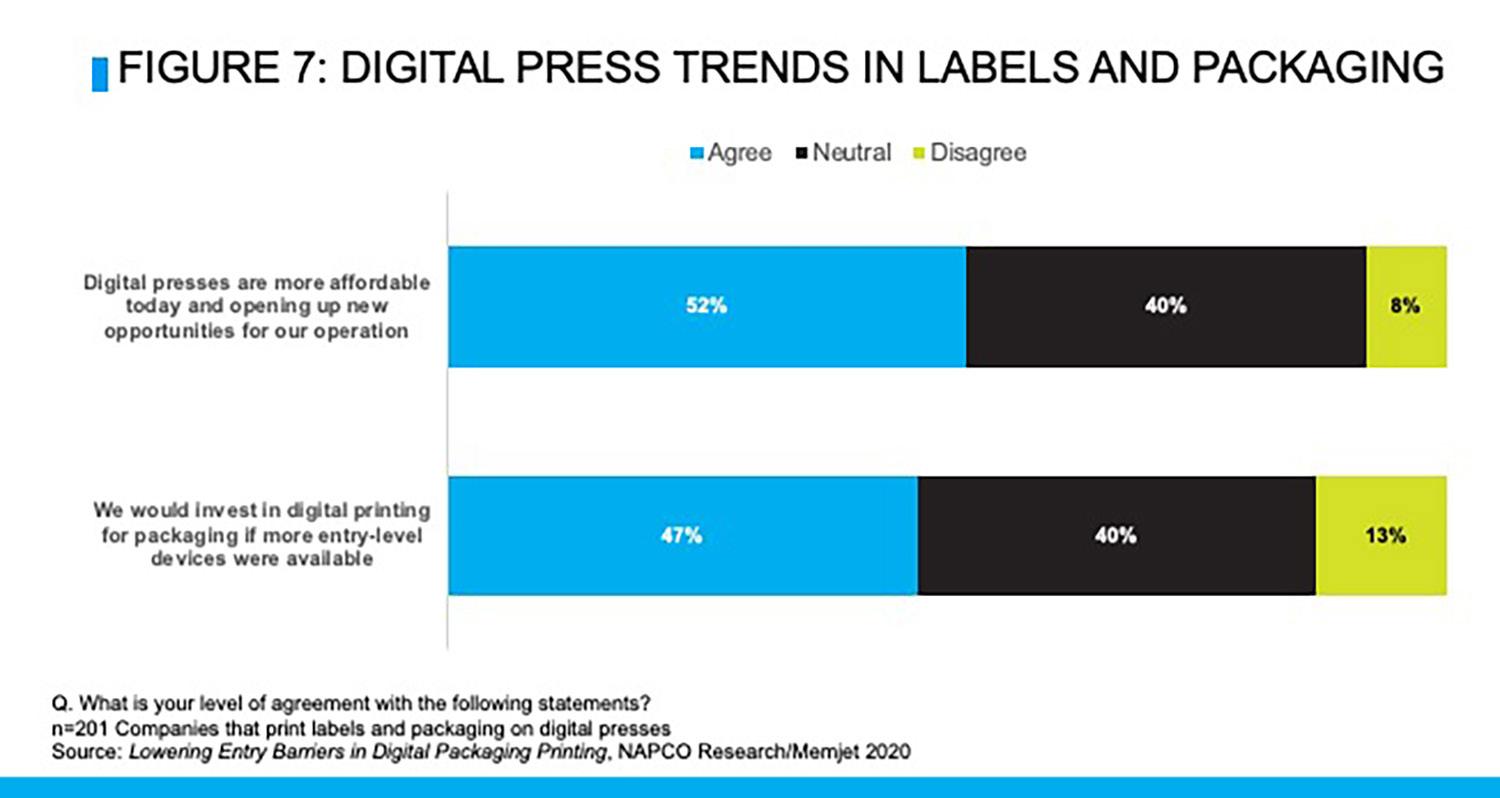
Inkjet printing of packaging is the next stage in print providers/converters’ evolution to serve brand owners. Competitive cost structures, faster printing speeds, enhanced image quality, and the ability to print on a wider variety of substrates are breaking barriers that previously restricted inkjet technology from achieving wider use in label and packaging applications.
According to Lowering Entry Barriers in Digital Printing for Packaging, survey respondents who printed labels and packaging on digital presses were asked if they printed those applications on inkjet presses. Over half of respondents reported printing labels and/or packaging on inkjet presses, with 45% printing labels and 22% printing packaging (Figure 6). Of the respondents who did not print labels and/or packaging on digital inkjet presses, 11% were planning to do so in the future.
Inkjet printing is creating new opportunities in label and packaging applications for current providers and those organizations looking to expand in this print market. Ongoing innovations in printheads, inks, and substrates are enabling printers and converters to transition work from analog presses
to new-breed digital printing systems that can handle both current products and new ones not previously possible.
Printheads with modular designs — versus fixed print bars —are enabling flexibility in developing solutions for a wide range of applications and investment budgets. The ability to stitch together multiple printhead modules enables equipment manufacturers to build a wide range of inkjet presses, from entry-level to high-end production. This means companies can enter the packaging market without having to make large investments in complex equipment.
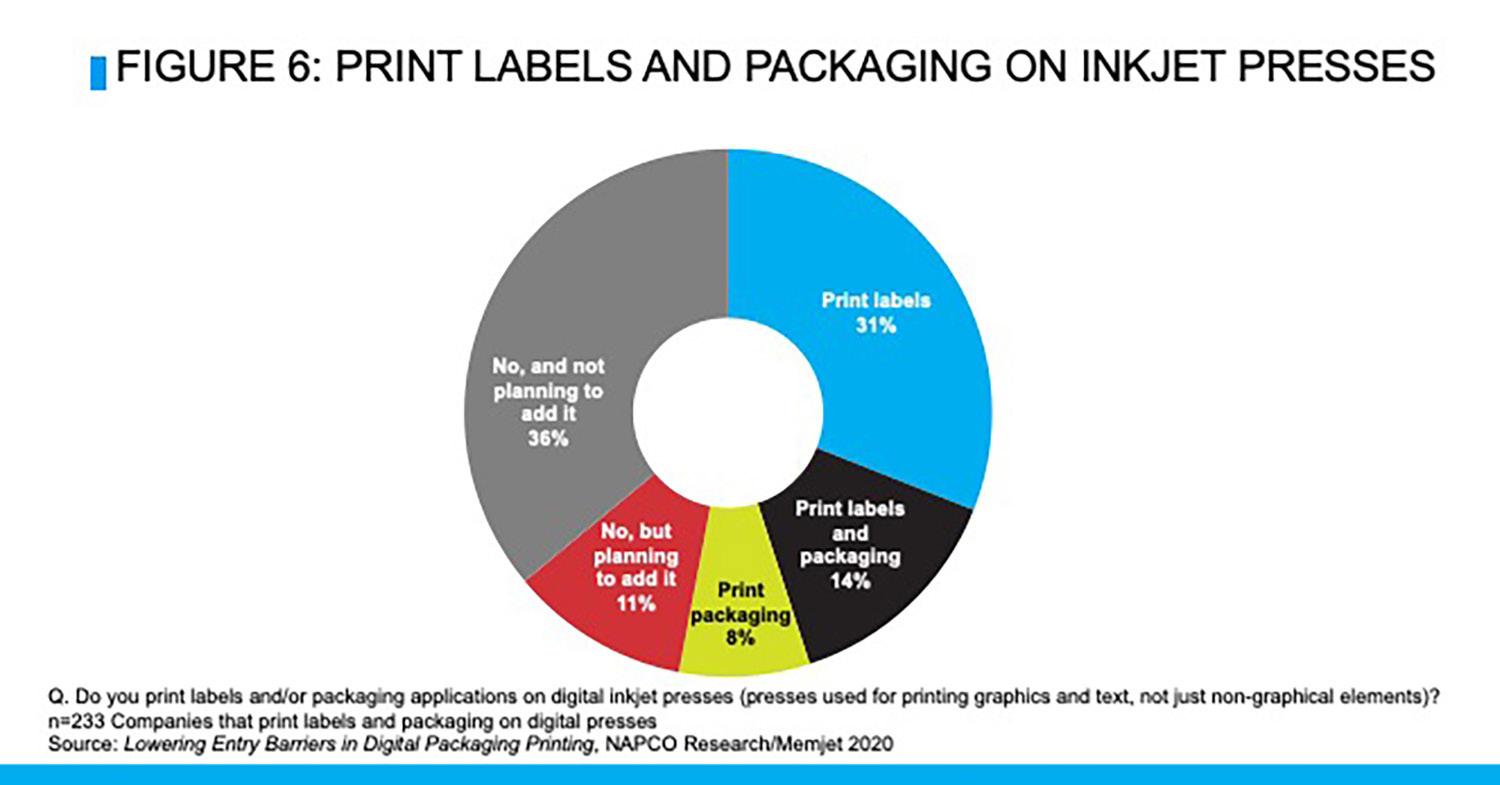
Inkjet printing can accommodate many features brand owners expect in their packaging. Buyers of labels and/or packaging expect their providers to offer products that:
• Are compelling and visually attractive • Engage customers • Meet color standards • Adhere to tight deadlines and fast turnaround schedules • Can be ordered in desired (required minimum) quantities • Accommodate higher numbers of stock keeping units (SKUs) • Support more targeted versions • Comply with changing regulations • Meet environmental standards #8. Tabletop Options Are Advancing Use of Digital Presses
There is a digital printing device for every budget and pressroom size, from presses costing well into the seven figures to tabletop devices for a few thousand dollars. A typical barrier to entering or expanding in the packaging market is investment cost. Over half of respondents to the recent NAPCO Research/Memjet survey report that digital presses for labels and packaging are more affordable and offer attractive opportunities (Figure 7).
As label and packaging printers pursue digital printing, it’s important to recognize that the technology is not limited to full-size production presses. Tabletop digital printers are an option
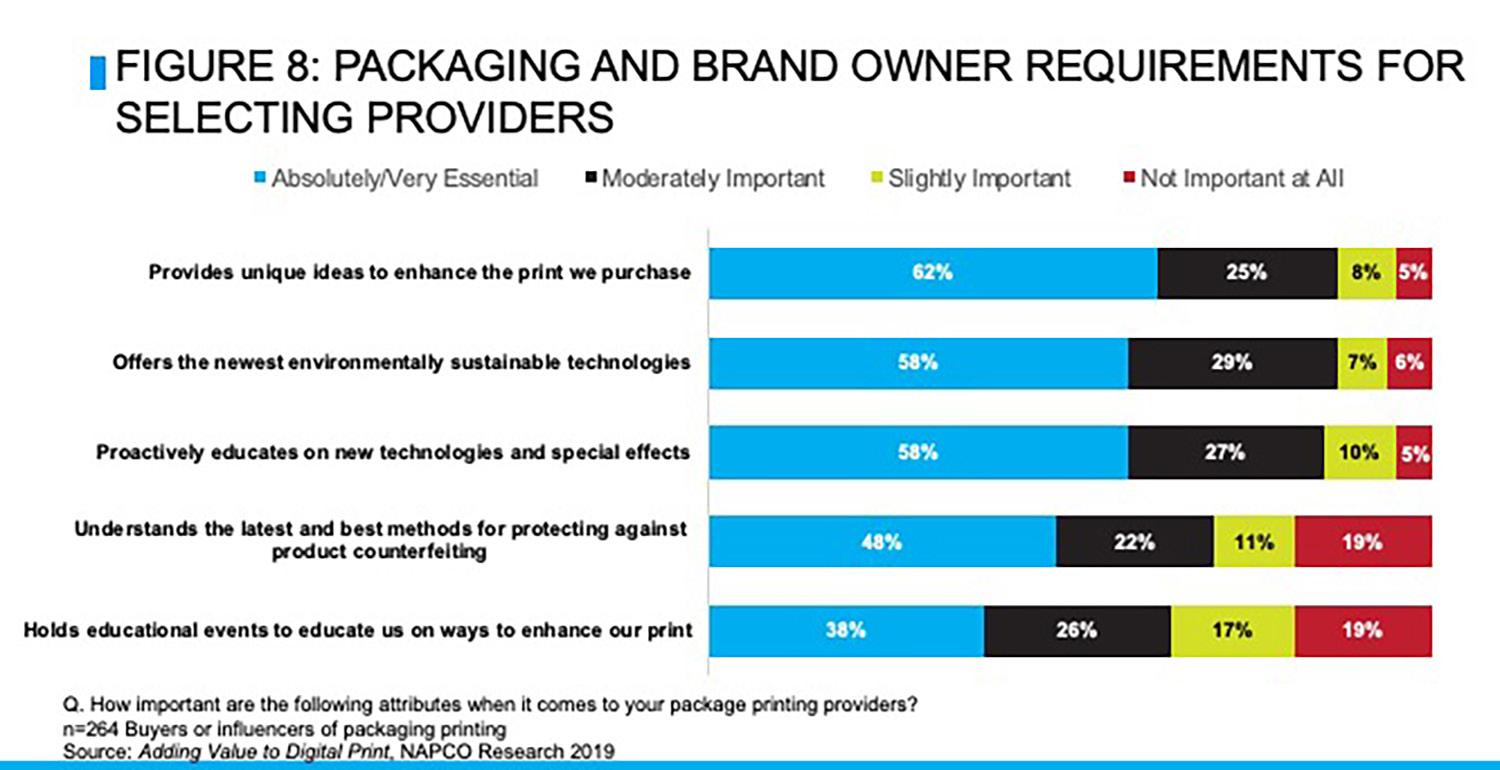
that help label printers in a wide range of markets.
While not the optimal choice for longer runs or massive campaigns, compact digital tabletop printers serve a vital niche by offering affordable short runs, personalization, and prototyping.
Digital benchtop printers give users a cost-effective way to add shortrun and small-batch label printing to their businesses. Label converters can use these systems for micro runs and prototyping work.
Many converters new to digital printing are using a benchtop solution to bring digital inkjet printing into their business for the first time. As demand and volumes for shorter runs or versioning work increase, such converters typically scale up solutions.
#9. Hybrid Flexo/Inkjet Printing Offers the Best of Both Worlds As digital printing continues to expand its presence in the packaging industry, printers and converters are investing in offerings that combine digital and conventional technologies to benefit from the advantages each technology offers. Hybrid printing systems that combine technology types are offering advantages and benefits to packaging printers and converters.
The creation of a “hybrid” printing system entails adding an inkjet-powered print engine, often called a retrofit, onto an existing analog printing press. This combined use of digital inkjet and analog production processes within one printing system is commonly referred to as “hybrid printing.” In the label segment, hybrid printing, which often combines inkjet and flexographic technologies, has emerged as a solution to provide the best of both worlds in a single-pass process. A few years ago, the printing speeds of digital and slow changeovers of flexography would have been prohibitive to the use of hybrid solutions. But times have changed.
Hybrid printing solutions give label printers much greater production flexibility. They can still use their flexographic presses to produce longerrun jobs, while the hybrid option extends their capabilities to include customized labels and packaging, higher graphic content, smaller lot sizes, and faster cycle times.
Label provider G2 ID Source, Jacksonville, Fla., reports operational benefits from investing in hybrid printing. The company added the Colordyne 3600 Series AQ retrofit to its existing flexographic press and finishing equipment, an investment that enabled it to produce more work faster. For example, company officials report printing a job 100% flexo takes four times longer and costs four times more than producing it on its hybrid press.
Hybrid technology can help packaging printers/converters achieve the shortrun advantages of digital, while still implementing the embellishment capabilities of flexography. A growing product benefiting from hybrid printing is alcoholic beverages. Craft beer, wine, and spirits are products that often have short-run label requirements. Printing these types of labels on hybrid presses enables digitally printed labels to achieve value-add embellishments similar to those produced on conventional presses.
Flexo units can print different embellishments or even print whites. For example, in jobs that require a heavy flood coat of underlay white, using a flexo white instead of a digital white costs a lot less.
#10. Enhancing Customer Experiences and Engagement Labels and packaging play a vital role in creating customer experiences and engagement. A visit to any retail store offers insight into the challenges brand owners face in improving and enhancing the marketing power of their labels and packaging. Crowded retail shelves are lined with a dizzying variety of product versions and sizes. Brands of all sizes want innovative and engaging packaging options that enable their products to stand out from the competition
Brand owners value print providers that can advise and educate them on ways and technologies available to enhance their labels and packaging. A recent NAPCO Research study on value- added digital printing effects finds that over half of brand owners want to work with print providers that provide them with ideas for enhancing their labels and packaging, offer the latest environmentally suitable technologies, educate them on new capabilities and special effects, and offer recommendations for improving brand security and protection (Figure 8).
FINAL THOUGHT The year ahead offers label and packaging printers/converters many opportunities to enhance productivity, improve profitability, and strengthen customer relationships. While industry trends and customer expectations are ever-changing, making strategic business investments in technology and serving brand owners — based on market realities — are solid approaches for staying ahead of the competition. Aligning strategies and tactics with the forces influencing competition and customer expectations are essential for setting a course to profitability in 2021 and beyond.










